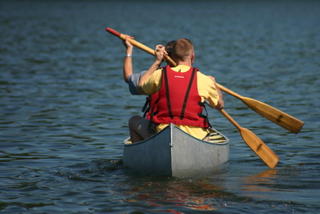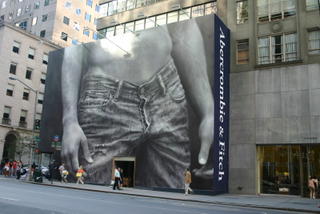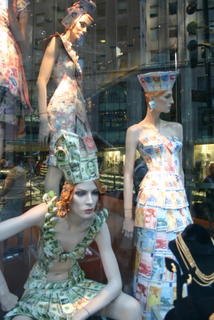Friday, September 30, 2005
Silkworm Journal I
The following is the correspondence between me and Yi regarding silkworms:
Subject: Silkworm Big Hit!
Date: Tue, 9 Aug 2005 17:27:38 -0400
Yi,
The silkworms are the biggest hit in my lab this year! Everybody goes and watches them several times a day, and Steve said that they were more entertaining than ants (which we used to have as lab pets for two seasons). We googled and figured out that they go through 4 molts to cocoons and so far, the four of them already molted once in our lab! It was really fun watching them walking out of their old skin. It was just like taking off some clothes! Thanks for giving them to me. Also the big supply of the leaves. One labmate found a mulberry tree on her way to T station. So I think we are fine for this season.
Please say Thank you to Claudia and Danica, too.
Date: Aug 10, 2005 11:24 AM
Subject: RE: Silkworm Big Hit!
Nice to hear they are the entertainers for you hard working scientists.
Just a few things in case you don't know. Don't feed them wet leaves. Wipe water off. Before they start spinning cocoons, it is better to put them where they can find corners. Claudia found that the best place for each one of them was the cylinder of tissue or paper towel, Place the cylinder vertically after they start spinning so their pee will come done. By doing so, you will have the best, whitest and highest quality silk! Usually they stay in cocoons for two weeks before the moths come out. Then everything goes as you know--looking for its soul mate, marriage and the rest of the story.
Have fun!
-Yi
Date: Aug 13, 2005 10:30 PM
Yi,
The worms have been eating like crazy. Yesterday morning I weighted them. They were about 2.1g each. This afternoon they each weighted about 3.1g! How the hell could they gain 50% body weight in one day! Totally amazing! They are almost 3 inches long now. How are the worms in your home doing?
My boss found this website the first day I took the worms in.
http://www.wormspit.com/bombyxsilkworms.htm
And I have just checked out other stuff and it is very interesting.
http://www.wormspit.com/index.htm
Take care!
From: Yi
Date: Aug 17, 2005 1:47 PM
Half of my wormies are in cocoons. Yesterday evening, Bob and I spent almost the whole evening watching them spinning and weaving. They are incredible creatures. Unfortunately, a lot of the eggs, if not all, are yellowish which, according to your web site, indicated they were infertilized :-(. I guess it was due to the uneven distribution of genders. So I am waiting for the rest of them. I have six died but still have more than ten left either in cacoon or still are growing and eating as monsters.
Have fun!
Date: Aug 17, 2005 2:52 PM
Yi,
My worms started spinning last night, too! Since I labeled my worms, we could keep track of them. Worm No. 1 was only 3.5gm, but started spinning first. Worm No. 2 was 4.5gm and is just starting right now. Worms No. 3 and 4 are about 4.2gm each and are not ready yet. They are still eating. Everyone was marveled at No. 1 because he made a cocoon just overnight! Oh, No. 2 just peed and pooped! That's some disgusting poop!
From: Yi
Date: Aug 18, 2005 10:41 AM
What a gang of scientific geeks! You weighed and labeled silkworms???
TO BE CONTINUED
Monday, September 26, 2005
Shooting RAW
RAW is also called "the digital negative". I know the flexibilities of negatives. I have fond memories of printing from negatives (will write about that later). A RAW file is uncompressed, containing all the information the camera took at the time of picture taking. There are many parameters that you can change when you process a RAW file, such as white balance, contrast, exposure, color tone, etc. That was my knowledge of RAW.
Today I read some technical articles on RAW. Though technical, they were still written for a layman such as me. I found them very informative. If you are interested, here are the links:
Ron Bigelow's articles on RAW: Part I, Part II, Part III.
The following is my 3-point summary of why we should shoot RAW:
- Digital camera sensors are linear devices. They only have a dynamic range of 5 to 6 stops. Highlights to mid-tones occupy most of the dynamic range (>75%). (See Table I in Part I)
- Human eyes are non-linear devices. Our eyes are more sensitive to shadows than highlights.
- JPEG is stored in 8-bit, RAW in 12-bit. Thus RAW conserves more information of shadow areas that appeal to human eyes.
OK, from now on I am going to shoot RAW only.
Sunday, September 25, 2005
田老师的剑桥瞬间
Wednesday, September 21, 2005
A Concert at Cold Spring Harbor Laboratory
This time we had a young violinist named Timothy Fain as our soloist. He was indeed very young (and good-looking), yet his music was great. In the 90 minutes long concert, he played Bach’s Partita No. 2 in D minor, Beethoven’s Sonata for violin and piano in A major, and a contemporary piece called Arches by Kevin Puts (born 1972). The concert exceeded my expectation for it was a really good one, and I really enjoyed it.
Bach’s music is simply elegant. The last movement Ciaccona has gone through so many different emotions to arrive at its end. Just beautiful.
Beethoven’s violin sonata in A major is not as famous as his Spring sonata, but just like Mr. Fain introduced, it is very beautiful, almost Schubertanian. Beethoven liked to write music based on simple and short music motifs, and people tend to forget that he was completely capable of writing long, romantic, and beautiful melodies. This violin sonata is a very good example of his other side. The pianist, Ieva Jokubaviciute, was also a very good concert pianist.
I had thought that the third piece would be some kind of music that I won’t be able to enjoy, just because its composer is so young, and I knew how modern music tend to be abstract and empty (sorry, my ears are not adapted to those weird tune systems yet). Much to my surprise, it was a very sweet one. It started slow, with jumping “arches” of notes over the violin strings. Then the speed picked up, getting faster and faster. At some points Mr. Fain was playing very high pitches at a fast pace. That must be very difficult, as a slight shift on the string would make a wrong note. He played it very well.
Mr. Fain gave brief introductions to the music he was going to play. I found this very helpful. As for the audience, most of the locals were elderly. It is a little sad that young people don’t find classical music enjoyable. But at least we have young musicians like Mr. Fain and Ms. Jokubaviciute who love the music they are making and also share this love with their audience.


Monday, September 19, 2005
Cold Spring Harbor Laborotory
Compared to the last time I went there, this time the food was so much better. Everyday there was a theme for the meals, and I had so much of everything that for a couple days after I came back I only wanted to eat two meals a day. We were treated a banquet for our last dinner there. Lobster was on the menu (one for each person, if you don't object to it). Two graduate students from Oxford were sitting on our table and it was their first time eating a lobster! So we had to tell them where the good parts are.
OK, back to the Laborotory itself. CSHL's president and former director, James Watson, is the co-discoverer of the double-helix structure of DNA (along with Francis Crick they won the Nobel Price in 1953). It is no surprise that you shall meet a lot of right-handed double-strands on this campus. The first one you see is the one in the lobby of the Grace Auditorium:

Then you go into the auditorium and you see them on the walls:

The first two are more realistic. The next one, behind Airslie, facing the Outer Harbor, is more artistic:

Other than double-helices, there are also other art objects in the shape of life forms at CSHL. Here is a pavilion. It's top looks to me like a virus particle:
 Of course, there are real lives on this campus. One night when we were leaving for our Holiday Inn, we spotted three bunnies on the lawn in front of our car, hiding in the safety of the complete darkness. Here is one bunny at dusk, not being shy at all:
Of course, there are real lives on this campus. One night when we were leaving for our Holiday Inn, we spotted three bunnies on the lawn in front of our car, hiding in the safety of the complete darkness. Here is one bunny at dusk, not being shy at all:
There are also ducks etc. and people are fishing here in the Inner Harbor:


There are many interesting sculptures, too. This one is a small fountain behind Airslie, in the shape of a chubby child holding a water basin:

This one is called Oak Tree II: (haven't found Oak Tree I anywhere)

This one is titled Getting There. The chrome top part swings in the wind.

People here can enjoy not only arts, but also water sports. There is a beach with life guards in the Outer Harbor. These researchers had just taken out a boat for some rowing in the afternoon.

Saturday, September 17, 2005
Harry Potter and the Teaching of Genetics to Children
I am also a biologist, thus it is quite interesting reading two recent correspondences in the top scientific journal Nature. The first one was published by a group of scientists from Australia. The title of their letter is "Harry Potter and the recessive allele". They argued that it would be easier to teach children genetics if we could use analogies to things they are interested in, for example (what a surprise), Harry Potter. So they went on and discussed the allel for wizards and muggles, also about pure-blood, half-blood, muggle-born and so on. I think this is a little too much, but still is fine. Yet I am a little confused at why this idea merits a publication in Nature.
Then this Thursday, a second correspondence (Harry Potter and the prisoner of presumption) came out. This time a group of British scientists expressed their disagreement with the first group's assumption that the ability of wizarding is a monogenic trait, in which wizarding allel (w) is recessive to muggle allel (M). And their so-called "available evidence" is the characters Hermoine and Naville. I can't help bursting out laughing. Come on, my fellow scientists, can't we talk about something more solidly scientific in Nature?
Four Hours in New York City
I have been too busy recently to post anything. Last week I went to a science conference in Cold Spring Harbor Laboratory. On my way back to Boston, I took a detour to NYC and spent 4 hours there. I walked in Central Park and on the 5th Avenue. New York is a busy city. There were a lot of people in Central Park, participating in all sorts of activities: sun bathing, dancing, jogging, drawing, sightseeing, and dog-walking.

People enjoying the afternoon sun on the Great Lawn in Central Park. The guy on left was looking up at something in the sky and it was:

Writings in the sky. Five small airplanes had been circling the city and writing advertisements in the sky. Unfortunately the writings dissipate very quickly, but I did see that one ad was for GEICO, an insurance company.

Again, Central Park, the Great Lawn. I am on the observatory, looking towards northeast.

Abercrombie & Fitch Store, Fifth Avenue. It’s under renovation. But the door in that place???

Fashion of (not sure about the store name). Definitely fashion of money. I couldn't get rid of the reflection on the window even with a circular polarizer filter!

Cathedral of St. Patrick’s, interior. People are arriving for Mass. Oops, didn't hold my camera absolutely horizontal.

Cathedral of St. Patrick’s, painted window
